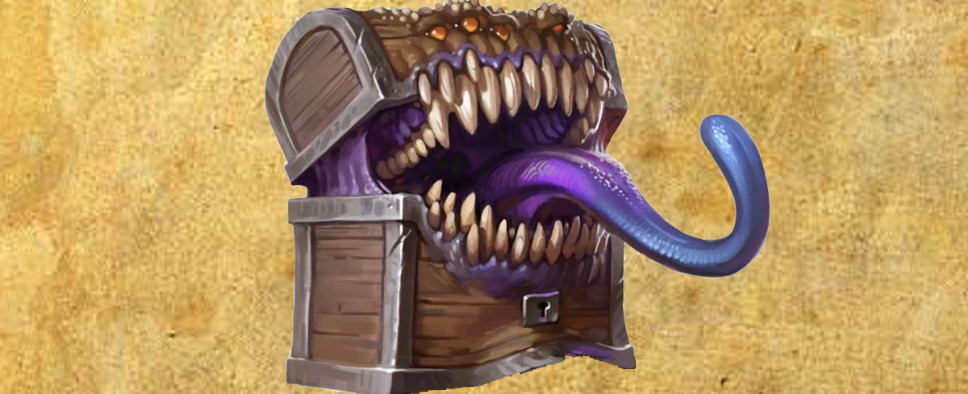The Murderous History of Mimics
-
Category: News ArchiveHits: 3236

Despite Greenwood's definition of the mimic giving them the power to take any shape, mimics are almost always enemies in games largely because of technology. D&D players have the luxury of interacting with as many NPCs as they can imagine, but for early PC games like Ultima, creativity was measured in bytes. With an Apple II’s specs, there was barely enough room for a fantasy world, let alone rich dialogue. So, to meet gameplay needs, ‘the mimic’ was colloquialized to ‘the monster chest.’
Discworld had a little more wiggle room. Computers had improved since the ‘80s and it wasn’t a fantasy RPG like Ultima; it was a point-and-click adventure game, and those are popular because of their writing and charm. Thus Luggage was born, intelligence and disobedience intact. Hardware and genre influenced the design of both games’ mimics, but both ultimately echoed the then-current standards set by D&D.
Jump to Baldur’s Gate in 1998. There wasn’t a shred left of the intelligence Luggage displayed; mimics were back to being regular old monster chests. Considering Baldur’s Gate’s wealth of dialogue and how faithfully it emulated D&D’s other systems, you’d think it could have made good use of a wise-cracking mimic or two. But while Baldur’s Gate didn’t have an easy time cramming an isometric RPG into a disc, its mimics were a result of design philosophy more so than technical limitations. Again, the focus here was on exploring a world, and to that end mimics were most useful as a clever way to liven up dungeons. And really, aside from the whole eating people thing, that’s what mimics have always been about: meeting the unique needs of games.
“Mimics are the workhorse shapeshifting critters, the most ubiquitous, versatile and yet low-powered,” Greenwood says. “Unlike, say, [werewolves], they have few strings attached to their shifting abilities, and lack the restrictions on form that most other shapeshifters have… Mimics can be anything, can have any degree of cunning a [dungeon master] requires, and the [dungeon master’s] desired patience, too,” Greenwood says.

